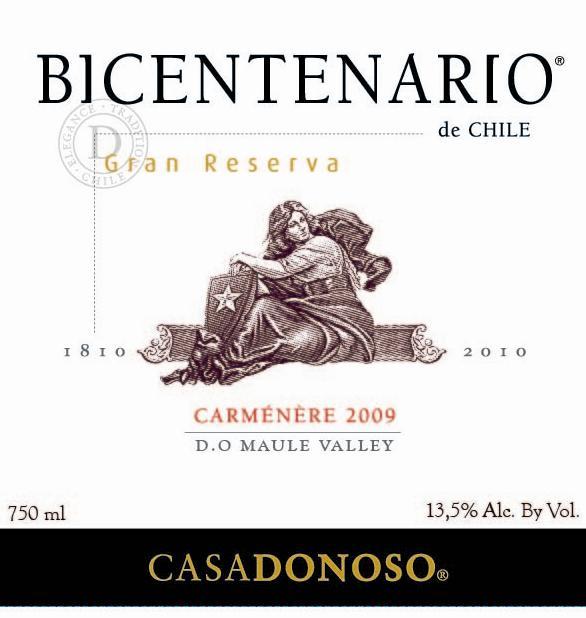2009 Maule Valley Carmenere
Casa Donoso Bicentario De Chile is a captivating red wine from the renowned Maule Valley, celebrated for its expression of Carmenere. This vintage, hailing from the distinguished year of 2009, showcases a full-bodied structure that instantly engages the palate. The wine exhibits vibrant acidity, providing a refreshing lift that complements its profound fruit intensity, characterized by luscious dark berries and hints of plum. The tannins are notably firm yet well-integrated, adding a structured backbone that enhances the wine's elegance. Its dryness allows the complex flavors to shine through, making it a perfect companion for rich dishes or a delightful experience on its own. Enjoying a glass of this exquisite wine transports you to the sun-kissed vineyards of Chile, embodying the region's rich winemaking heritage.
Casa Donoso Bicentario De Chile is a captivating red wine from the renowned Maule Valley, celebrated for its expression of Carmenere. This vintage, hailing from the distinguished year of 2009, showcases a full-bodied structure that instantly engages the palate. The wine exhibits vibrant acidity, providing a refreshing lift that complements its profound fruit intensity, characterized by luscious dark berries and hints of plum. The tannins are notably firm yet well-integrated, adding a structured backbone that enhances the wine's elegance. Its dryness allows the complex flavors to shine through, making it a perfect companion for rich dishes or a delightful experience on its own. Enjoying a glass of this exquisite wine transports you to the sun-kissed vineyards of Chile, embodying the region's rich winemaking heritage.




